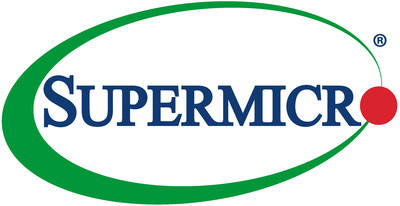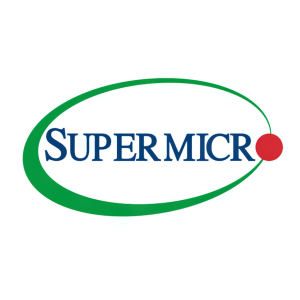Supermicro Debuts New Top-Loading and Simply Double Storage Systems with 3rd Generation Intel Xeon Processors, PCI-E 4.0 with NVMe Cache for High-Capacity Cloud-Scale Storage
Super Micro Computer (SMCI) announced new top-loading storage solutions with 60-bay and 90-bay systems, optimized for 3rd Gen Intel Xeon Scalable processors and PCI-E 4.0 NVMe drives. These high-capacity systems are designed for cloud-scale storage and high-performance computing (HPC) workloads. Features include tool-less modular designs for easy serviceability, supporting a maximum of 1.6 petabytes of storage. The new Simply Double storage systems also enhance performance while maintaining a dense storage footprint. This launch coincides with the Open Storage Summit 2021 from July 27-29.
- Introduced new 60-bay and 90-bay top-loading storage systems optimized for 3rd Gen Intel Xeon processors.
- Supports up to 1.6 petabytes of storage, enhancing capacity for cloud-scale storage applications.
- Tool-less modular design improves system serviceability, allowing for quick technician access.
- None.
Insights
Analyzing...
SAN JOSE, Calif., July 27, 2021 /PRNewswire/ -- Super Micro Computer, Inc. (Nasdaq: SMCI), a global leader in enterprise computing, storage, networking solutions, and green computing technology, announced new versions of its market-proven top-loading storage solutions with 60-bay and 90-bay systems along with new Simply Double storage systems fully optimized for the latest 3rd Gen Intel Xeon Scalable processors and PCI-E 4.0 NVMe drives. These best-in-class high-capacity storage and expansion systems are ideal for cloud-scale storage implementations as well as HPC storage workloads.
"As the growth in software-defined, cloud-based storage continues to accelerate, Supermicro helps data centers to rapidly modernize their infrastructure to leverage flexible configuration, tool-less modular designs that can be serviced by a technician, and simple expansion capabilities with our new X12 60-bay or 90-bay single, dual node and high availability architecture innovation," said Charles Liang, president, and CEO, Supermicro. "Our new high-capacity storage systems continue Supermicro's focus on resource saving and delivers industry-leading capacity for a lower total cost of ownership (TCO)."
Top-Loading Storage Systems
Supermicro's new top-loading architecture delivers improved flexibility, modularity, and serviceability that customers require. Both 60-bay and 90-bay systems are available in single-node, dual-node, and dual-node high availability (HA) configurations. The dual-node HA and single-node configurations control access to all drives in the systems. The dual-node configuration evenly split the drive control access between each node. With a modular, tool-less design, all critical onboard systems – hot-swap server nodes, expanders, fan modules, power supplies, and drives – are fully optimized for easy serviceability by one technician.
Supermicro's new high-capacity top-loading systems are optimized for enterprise and cloud-scale storage environments. This scale-up and scale-out architectures design offers customers the configuration options of PCI-E 4.0-based RAID or IT mode SAS controller. These 4U systems feature 60 or 90 hot-swap 2.5" or 3.5" SAS3/SATA3 bays plus two onboard PCI-E M.2 slots and two internal slim SATA SSD slots. The single-node system also supports two rear hot-swap 2.5" bays for OS mirroring and four optional NVMe U.2 bays for fast caching. The system supports 1.6 petabytes of cost-optimized storage at the maximum configuration, plus up to 60TB of SSD flash via the rear-accessed NVMe. The single- and dual-node systems use 3rd Gen Intel Xeon Scalable processors in a dual-socket configuration with 16 DIMM slots per server node.
Simply Double Storage Systems
Supermicro's Simply Double storage server is an industry-leading solution for content delivery. Today's announcement introduces performance and serviceability enhancements to the overall design to support 3rd Gen Intel Xeon Scalable processors in a dual-socket configuration with 16 DIMMs while maintaining the same dense storage footprint. Up to four rear hot-swap U.2 NVMe bays are supported, allowing users to add flash without sacrificing any of the 24 SAS/SATA 3.5" storage bays. Innovative chassis design enhances airflow and streamlines system service accessibility to components such as the motherboard, CPU, memory, PCI-E slots, internal drive bays, and rear drive bays. Along with these mechanical improvements, the system can be configured with the options of PCI-E 4.0-based RAID or IT mode SAS controller.
Supermicro Storage Summit
Supermicro is launching these new systems in conjunction with its Open Storage Summit 2021, highlighting software-defined storage technology innovations. The Open Storage Summit 2021 will take place from July 27 - 29, 2021. Please click here for more details and to register.
About Super Micro Computer, Inc.
Supermicro (SMCI), the leading innovator in high-performance, high-efficiency server technology, is a premier provider of advanced Server Building Block Solutions® for Enterprise Data Center, Cloud Computing, Artificial Intelligence, and Edge Computing Systems worldwide. Supermicro is committed to protecting the environment through its "We Keep IT Green®" initiative and provides customers with the most energy-efficient, environmentally-friendly solutions available on the market.
Supermicro, Server Building Block Solutions, and We Keep IT Green are trademarks and/or registered trademarks of Super Micro Computer, Inc.
Intel, the Intel logo, and other Intel marks are trademarks of Intel Corporation or its subsidiaries.
All other brands, names, and trademarks are the property of their respective owners.
![]() View original content to download multimedia:https://www.prnewswire.com/news-releases/supermicro-debuts-new-top-loading-and-simply-double-storage-systems-with-3rd-generation-intel-xeon-processors-pci-e-4-0-with-nvme-cache-for-high-capacity-cloud-scale-storage-301341583.html
View original content to download multimedia:https://www.prnewswire.com/news-releases/supermicro-debuts-new-top-loading-and-simply-double-storage-systems-with-3rd-generation-intel-xeon-processors-pci-e-4-0-with-nvme-cache-for-high-capacity-cloud-scale-storage-301341583.html
SOURCE Super Micro Computer, Inc.









